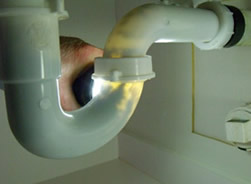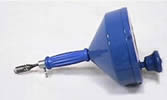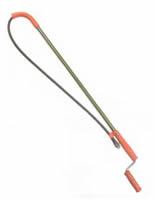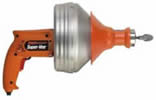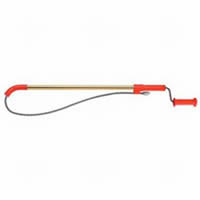How to Handle Clogs, Leaks, and Other Common Plumbing Problems
Owning your own home is certainly a luxury, but all too often homeowners are stumped when it comes to simple plumbing problems like clogged drains, leaky faucets, low water pressure, and more. While it is easy to grab the phone and call out Joe the Plumber (who, by the way, is all too happy to take your money), there is a certain satisfaction that can be derived from tackling your own plumbing problems and projects if you have the time and an interest in doing so. Let's take a look at some of the easy to fix plumbing problems and more complex "disasters" that are likely to spring up from time to time in your home plumbing.
Dealing With and Preventing Clogged Drains
If you've never had a clogged drain, consider yourself lucky because it can be (or cause) a mess. A clog usually occurs when something gets caught in a pipe that runs from a drain in your home. Before you go counting the Lego blocks to determine how many Little Billy flushed down the toilet, take a moment and breathe. Although most clogs are caused by curious kids who want to see if that miniature G.I. Joe figurine really can swim, there are other issues that can cause clogs and usually a very simple solution to fixing the problem. First of all if it is a clog in the toilet, you can use the old-standby trick that industrious mothers (and hesitant fathers) have used for years - with a rubber-glove clad hand, reach down into the bottom of the toilet bowl (yes, the hole in the toilet where everything is expelled into the sewer) and feel for a lost object. Can't find it but you know it's there? Oftentimes using some drain cleaner will do the trick. A good brand is Liquid Fire - it will melt G.I. Joe down to his skivvies and send him on out with the rest of the waste. Always use drain cleaners with care because they are highly toxic and very flammable. Read package instructions and warnings carefully. Clogged shower? The likely culprit is hair that has clogged the drain. You can outfit your drain to catch hair that is inevitably lost during shampooing by installing a "grate". You can also take a pair of needle-nose pliers and "dig" the hair out (it will be really disgusting-looking and usually in a huge clump) which will get the water flowing properly again in most cases. If that doesn't work, you can use Drano or other drain cleaning fluid (see cautions above) to rid the drain of hair. Clog in the kitchen sink? Could be that someone has allowed excess grease to get down the drain. While this is a big no-no, you will (again) need to use drain cleaner to get rid of the problem if a degreasing cleaner doesn't loosen the grease and move it on its way.
An ounce of prevention is in order when it comes to your home's plumbing system. Avoiding clogs can be as easy as making sure that kids (even the big one you are married to) understand what can and cannot be flushed down the toilet or poured down the kitchen sink. As a general rule, don't flush anything in your toilet unless it is waste or toilet tissue. This includes tampons, cigarette butts, and tiny army figurines.
Dealing with Leaks
Leaks in your home can be both frustrating and damaging to your home and its foundation, while doing nothing to help curb your water bill. Leaks can be found in nearly any part of your home's plumbing system, but the most likely place to spot a leak is in your toilet. The most common toilet leak occurs when the flapper in the back of your toilet tank becomes degraded with age and allows water to leak through continuously to the toilet bowl. Check for this common leak by putting a few drops of food coloring in the back of the tank. Within about ten minutes, the water in the bowl will be colored if you have a leak. Most leaks have an easy fix - simply cut the water off to the toilet (sink, etc.) and replace the leaky part. Other leaks may be more serious and will have to be addressed by a plumber.
|
|


